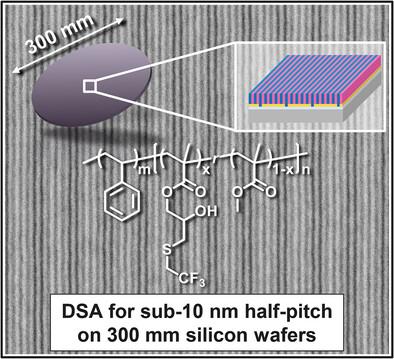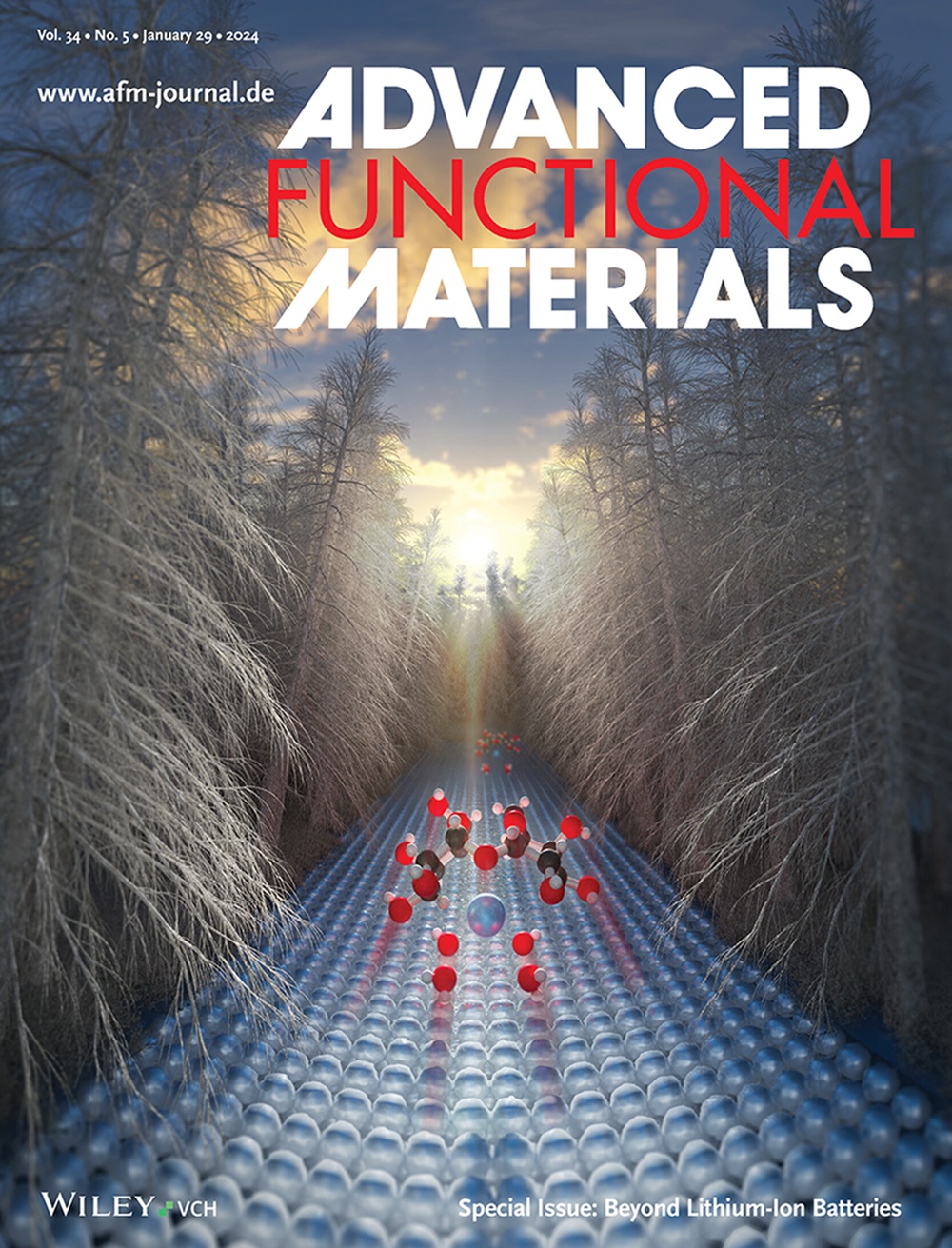High-Fidelity Directed Self-Assembly Using Higher-χ Polystyrene-Block-Poly(Methyl Methacrylate) Derivatives for Dislocation-Free Sub-10 nm Features
IF 18.5
1区 材料科学
Q1 CHEMISTRY, MULTIDISCIPLINARY
引用次数: 0
Abstract
Extreme ultraviolet (EUV) lithography currently enables the creation of ultrafine patterns. However, as miniaturization progresses, stochastic defects become a significant challenge. Directed self-assembly (DSA) of block copolymers (BCPs) has gained attention for pattern rectification to improve the quality of EUV patterns or for density multiplication to obtain sub-10 nm features. DSA is one of the most promising miniaturization processes because it does not cause stochastic defects. However, dislocation defects are an important issue in density multiplication using strongly segregating BCP. This study demonstrates the use of DSA on 300 mm silicon wafers with higher-Flory-Huggins interaction parameter (χ) polystyrene-block-poly(methyl methacrylate) derivatives for sub-10 nm features. These higher-χ polymers, synthesized from polystyrene-block-[poly(glycidyl methacrylate)-random-poly(methyl methacrylate)] (PS-b-PGM) and 2,2,2-trifluoroethanethiol (PS-b-PGFM), show excellent reproducibility of perpendicular lamellae. Line patterns with a sub-10 nm half-pitch are successfully formed by DSA on 300 mm wafers. Line patterns without parallel-oriented structures or dislocations can be achieved by optimizing the chemical guides and annealing conditions. A polymer with a higher χN value exhibits improved roughness in the resulting line patterns.

目前,极紫外(EUV)光刻技术能够制作超精细图案。然而,随着微型化的发展,随机缺陷成为一个重大挑战。嵌段共聚物(BCPs)的定向自组装(DSA)在图案矫正以提高极紫外(EUV)图案质量或密度倍增以获得 10 纳米以下特征方面受到了关注。DSA 是最有前途的微型化工艺之一,因为它不会造成随机缺陷。然而,在使用强分离 BCP 进行密度倍增时,位错缺陷是一个重要问题。本研究展示了在 300 毫米硅晶片上使用 DSA 与较高弗洛里-哈金斯相互作用参数 (χ)的聚苯乙烯-块状-聚甲基丙烯酸甲酯衍生物,以获得 10 纳米以下的特征。这些高χ聚合物是由聚苯乙烯块-[聚(甲基丙烯酸缩水甘油酯)-无规聚(甲基丙烯酸甲酯)](PS-b-PGM)和 2,2,2-三氟乙硫醇(PS-b-PGFM)合成的,显示出垂直薄片的出色再现性。通过 DSA,可在 300 mm 晶圆上成功形成半间距小于 10 nm 的线型图案。通过优化化学导向和退火条件,可获得无平行导向结构或位错的线型图案。具有较高 χN 值的聚合物可改善所形成的线型图案的粗糙度。
本文章由计算机程序翻译,如有差异,请以英文原文为准。
求助全文
约1分钟内获得全文
求助全文
来源期刊

Advanced Functional Materials
工程技术-材料科学:综合
CiteScore
29.50
自引率
4.20%
发文量
2086
审稿时长
2.1 months
期刊介绍:
Firmly established as a top-tier materials science journal, Advanced Functional Materials reports breakthrough research in all aspects of materials science, including nanotechnology, chemistry, physics, and biology every week.
Advanced Functional Materials is known for its rapid and fair peer review, quality content, and high impact, making it the first choice of the international materials science community.
 求助内容:
求助内容: 应助结果提醒方式:
应助结果提醒方式:


